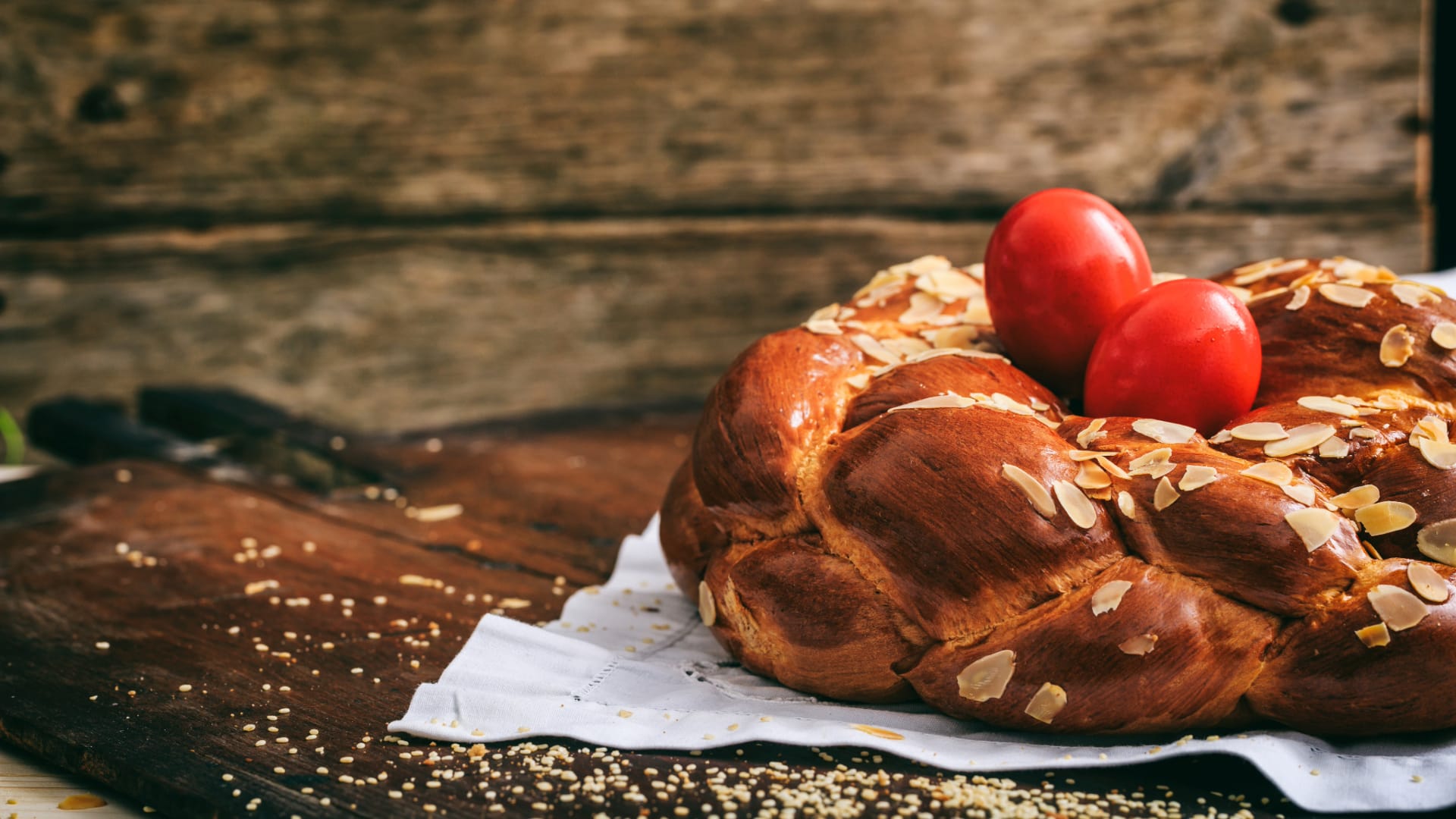Red-Dyed Eggs (Κόκκινα αυγά)
A powerful symbol of rebirth and Christ's blood, these hard-boiled eggs are dyed deep red and used in a playful game called tsougrisma - egg tapping - where the strongest egg wins.

Greek Easter is a true feast for the senses - and especially the taste buds. After the long Lenten fast, Easter Sunday marks the return to rich, celebratory meals rooted in centuries of tradition. Here's a look at the most iconic dishes you'll find on a Greek Easter table:
A powerful symbol of rebirth and Christ's blood, these hard-boiled eggs are dyed deep red and used in a playful game called tsougrisma - egg tapping - where the strongest egg wins.
Easter cookies - butter-based, lightly sweet, and often twisted into braids or spirals. Perfect for nibbling with a cup of Greek coffee.
In English: View the Video
A rustic dish made from lamb innards (intestines, liver, lungs, heart), seasoned and wrapped around skewers, then grilled. Intense and flavorful, it's a delicacy for meat lovers.
This unique soup is eaten after the Resurrection service on Holy Saturday. Made from lamb offal, lettuce, dill, and rice, it's both symbolic and comforting, easing the body back into meat after Lent. It's finished with avgolemono, a lemon-egg sauce that adds richness and tang.
A sweet, braided Easter bread flavored with mahlepi (wild cherry seed) and mastic, often decorated with a red egg nestled in the dough. Soft, fragrant, and slightly chewy, it's enjoyed with coffee or as a dessert.
The star of the Easter Sunday feast. A whole lamb, symbolizing the Lamb of God, is roasted over an open fire, often for hours. Families gather around, sharing wine, music, and good company as the meat turns golden and crisp.

